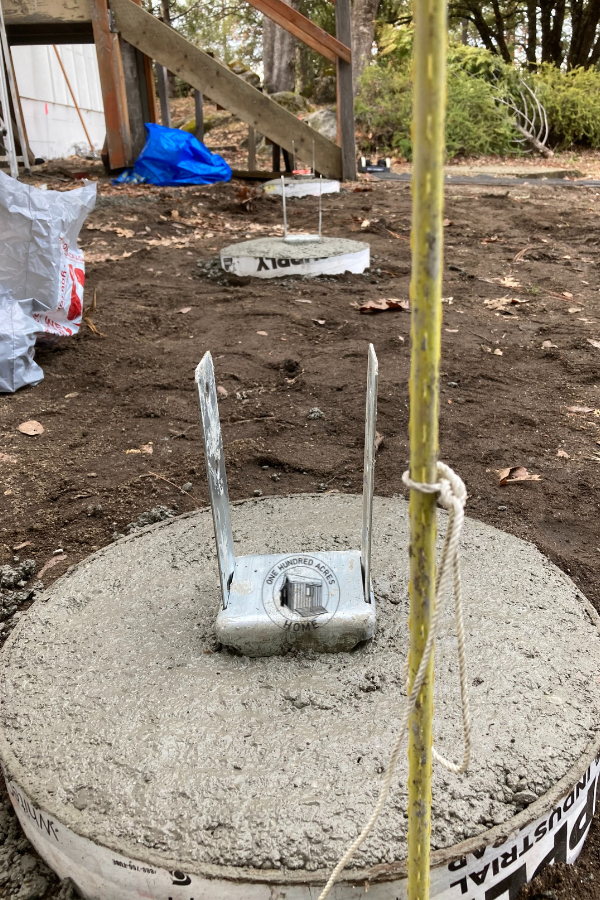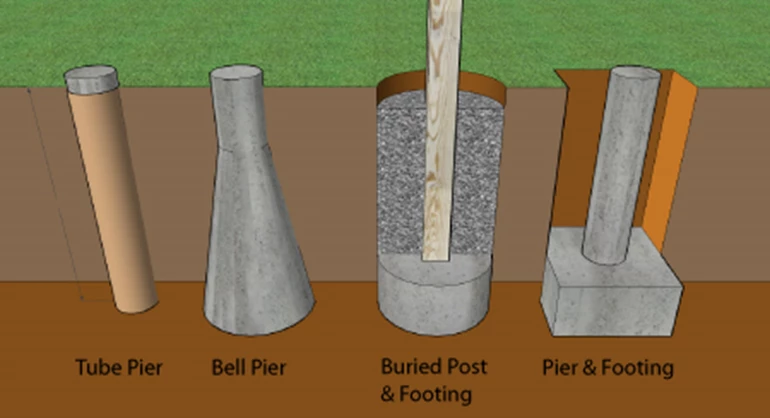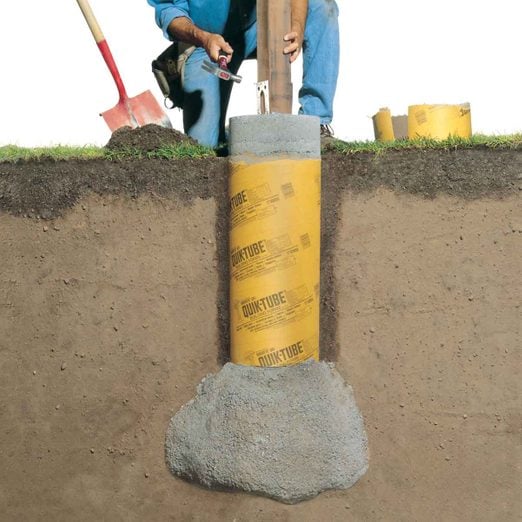A Strong Foundation for Your Oasis: Discovering the Importance of Deck Footings in Outdoor Structures
A Strong Foundation for Your Oasis: Discovering the Importance of Deck Footings in Outdoor Structures
Blog Article
Specialist Tips for Setting Up Deck Footings to Support Your Outdoor Room
When it comes to constructing a deck, one of the most important components to consider is the installation of appropriate grounds. These footings are the foundation upon which your outside room will rest, offering security and support for years to come. What precisely does it take to mount deck footings correctly?
Significance of Appropriate Deck Grounds
Correct deck grounds are vital for guaranteeing the stability and durability of your outdoor room. Without strong and appropriately set up footings, your deck may become unsteady, leading to safety threats and costly fixings.

In enhancement to stability, appropriate deck footings also add to the durability of your exterior area (Deck Footings). Grounds that are created and created to endure the components and dirt problems in your area will assist protect against the deck from changing or settling in time. By guaranteeing the grounds are appropriately sized and installed, you can minimize the danger of damage to the deck framework, extending its life-span and reducing the need for pricey repairs or substitutes

Selecting the Right Kind Of Footings
When selecting the suitable kind of grounds for your deck, it is very important to think about elements such as dirt problems, neighborhood structure codes, and the total layout of your exterior area. The kind of footing you select will play an important function in making sure the stability and durability of your deck.
One typical kind of ground is the concrete footing. Concrete footings are appropriate for a lot of dirt problems and provide outstanding assistance for decks. They are generally set up listed below the frost line to avoid moving and resolving because of cold and thawing cycles. Another choice is helical piers, which are ideal for areas with unstable dirt or high water tables. These piers are screwed into the ground and provide strong assistance for the deck.
In many cases, you might require to make use of specialized footings, such as pile footings or deep foundations, if you are developing a big or multi-level deck. These grounds are developed to disperse the weight of the deck over a larger area, making certain stability and avoiding sinking or resolving.
Prior to picking a kind of footing, it is vital to consult local building codes and regulations to guarantee compliance. Furthermore, consider the design and intended usage of your outside space. Variables such as the dimension, shape, and load-bearing needs of your deck will certainly influence the kind of footing that is most suitable.
Preparing the Ground for Footing Installment
To appropriately prepare the ground for footing setup, it is important to analyze the soil conditions and take essential steps to ensure security and toughness of the deck. The initial step is to dig deep into the area where the footings will certainly be set up. The depth of the excavation will certainly depend on the frost line in your area and the details requirements of the click here to read deck design. It is vital to get rid of any type of greenery, rocks, or particles from the excavation to make certain a solid foundation.
As soon as the location has been dug deep into, the next step is to small the dirt. This can be done utilizing a plate compactor or by utilizing a hand tamper. Condensing the dirt assists to remove any gaps or air pockets, which can result in resolving and instability over time.
After condensing the dirt, it is crucial to lay a layer of crushed rock or smashed stone at the base of the excavation. This will offer water drainage and aid to avoid water from pooling around the grounds, which can bring about disintegration and instability.
Step-by-Step Guide to Installing Deck Footings
After appropriately preparing the ground for footing installment, the following action is to begin the process of installing deck grounds. This detailed guide will supply you with a clear understanding of just how to mount deck grounds for your outdoor area.
Determine the location: Beginning by marking the positions of the deck footings making use of risks and string. Ensure that the locations align with the layout and design of your deck.
Dig the openings: Use a blog post opening miner or an auger to dig the openings for the grounds. The deepness and size of the openings should be in accordance with local building regulations and the details needs of your deck style.
Level the holes: Use a level to guarantee that the holes are dug to the proper depth and are level with each other. (Deck Footings)
Add gravel: Location a layer of gravel at the bottom of each opening to enhance water drainage and protect against the wood from decomposing.
Insert the footings: Position the footings into the openings, making certain they are level and plumb. Make use of a degree and a gauging tape to make certain accuracy.
Secure the grounds: Put concrete right into the openings around the footings, loading them to the top. Utilize a message level to ensure the grounds continue to be level as the concrete click here to find out more sets.
Permit time for treating: Let the concrete treatment according to the maker's directions before proceeding with the deck building.
Typical Errors to Prevent During Footing Setup
One vital aspect to take into consideration throughout look at this now the installment of deck grounds is staying clear of usual errors that can jeopardize the security and durability of your outside area. While deck footings may appear like a straightforward and simple part of the building procedure, forgeting particular factors can lead to costly repair services and prospective security dangers down the line.

Additionally, disregarding to mount appropriate drain procedures can trigger water to accumulate around the grounds, causing rot, degeneration, and the ultimate weakening of the deck's foundation. Furthermore, making use of the wrong sort of footing material or falling short to appropriately protect the footings can jeopardize their structural honesty.
To stay clear of these blunders, it is vital to seek advice from an expert or comply with market guidelines to make certain appropriate ground installation. By doing so, you can make certain the security and durability of your exterior area, supplying a enjoyable and risk-free setting for many years ahead.
Final Thought
To conclude, setting up correct deck grounds is essential for the security and durability of your exterior space. By selecting the ideal type of grounds and adequately preparing the ground, you can make sure a strong structure for your deck. Following a step-by-step guide and avoiding common mistakes throughout footing installation will certainly better enhance the resilience and security of your deck.
Proper deck footings are essential for guaranteeing the stability and longevity of your outdoor space. The grounds offer as a link in between the ground and the deck, permitting the weight of the deck and its occupants to be dispersed evenly into the soil.One typical kind of ground is the concrete footing. Insert the grounds: Put the grounds right into the openings, making certain they are degree and plumb. Safeguard the grounds: Put concrete right into the openings around the grounds, filling them to the top.
Report this page